Incurved Terrains
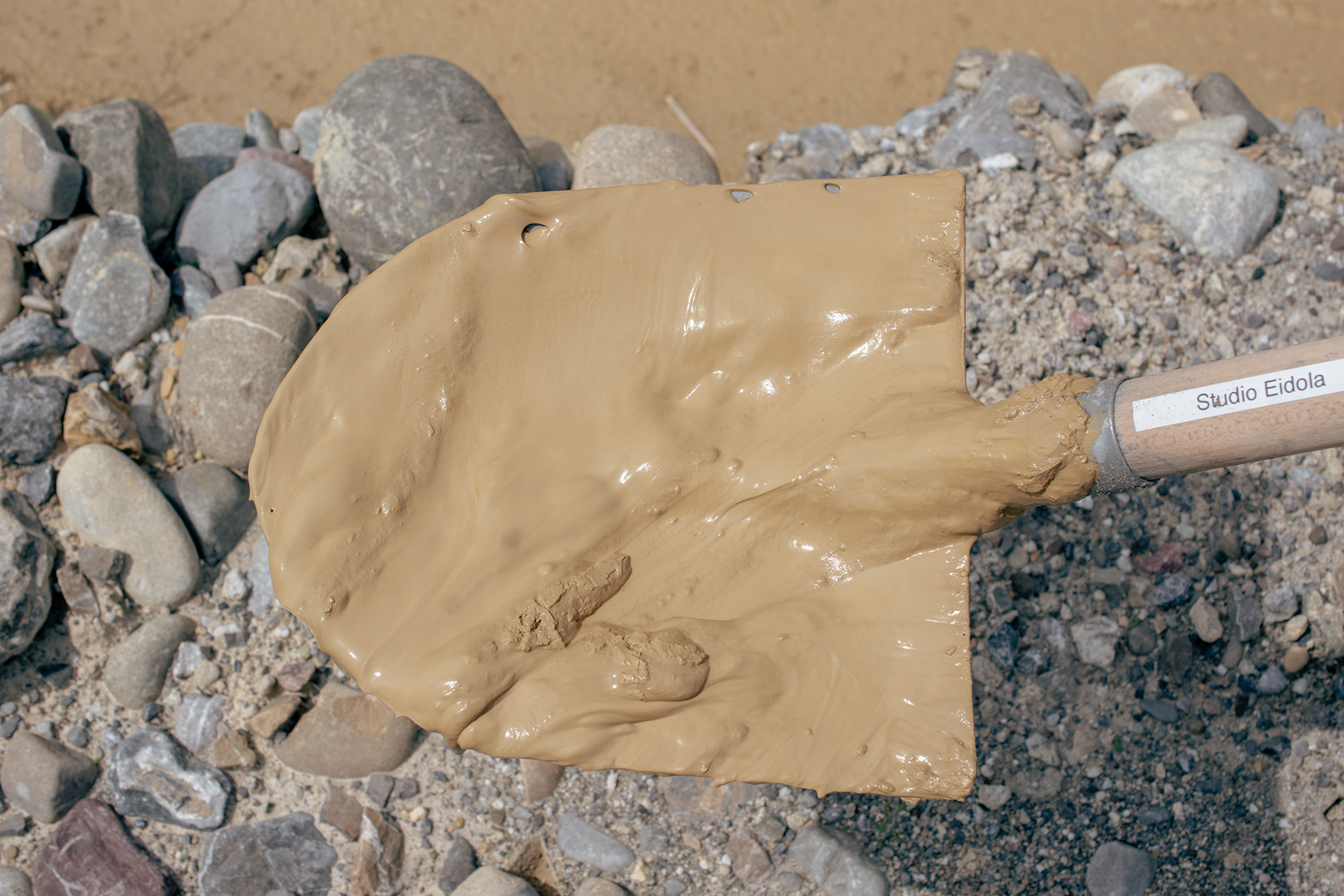
Quarry silt. SE, 2024.
Incurved Terrains is part of our ongoing research into the overlooked waste materials produced by quarrying processes. Each site reveals a different material character—shaped by geology, climate, and extraction methods. This particular iteration takes place in a gravel quarry in the Schaffhausen region of Switzerland, where the residual materials differ in composition and behavior from other sites studied.
The project focuses not on the extracted resources themselves—gravel, sand, or stone—but on what is left behind. In this case, fine silt becomes the central subject: a byproduct generated during the washing phase of gravel extraction. To improve the quality of construction materials like concrete, the extracted mix is washed, producing a slurry that is funneled into large settling pools. There, the silt gradually sinks to the bottom, forming layers, while excess water flows out. These pools, located at the margins of production, are designed for efficiency, yet they accumulate material that resists straightforward classification—as neither useful nor entirely waste.
Unlike heavier, more tangible waste, silt is fine, light, and slow to settle, but it holds geological memory. What begins as a technical necessity becomes an accidental landscape: the settling pools, over time, shift into dynamic micro-environments. Plants colonize the muddy edges, insects thrive, and the boundary between artificial and organic begins to blur.
Incurved Terrains situates itself within this ambiguity, extending our investigation into quarry waste by actively engaging with the material logic of silt. Since silt represents the discarded fraction of washed sand—material deemed unsuitable for structural use—it prompted a shift in focus: from observing its environmental accumulation to exploring its potential as a casting medium. This led to the development of a hybrid method that draws from both sand casting and slip casting, traditionally used in metal and ceramic work. Sand serves as a temporary, impressionable mold, while the slip—the liquid form of the silt—responds to it through absorption and surface interaction.
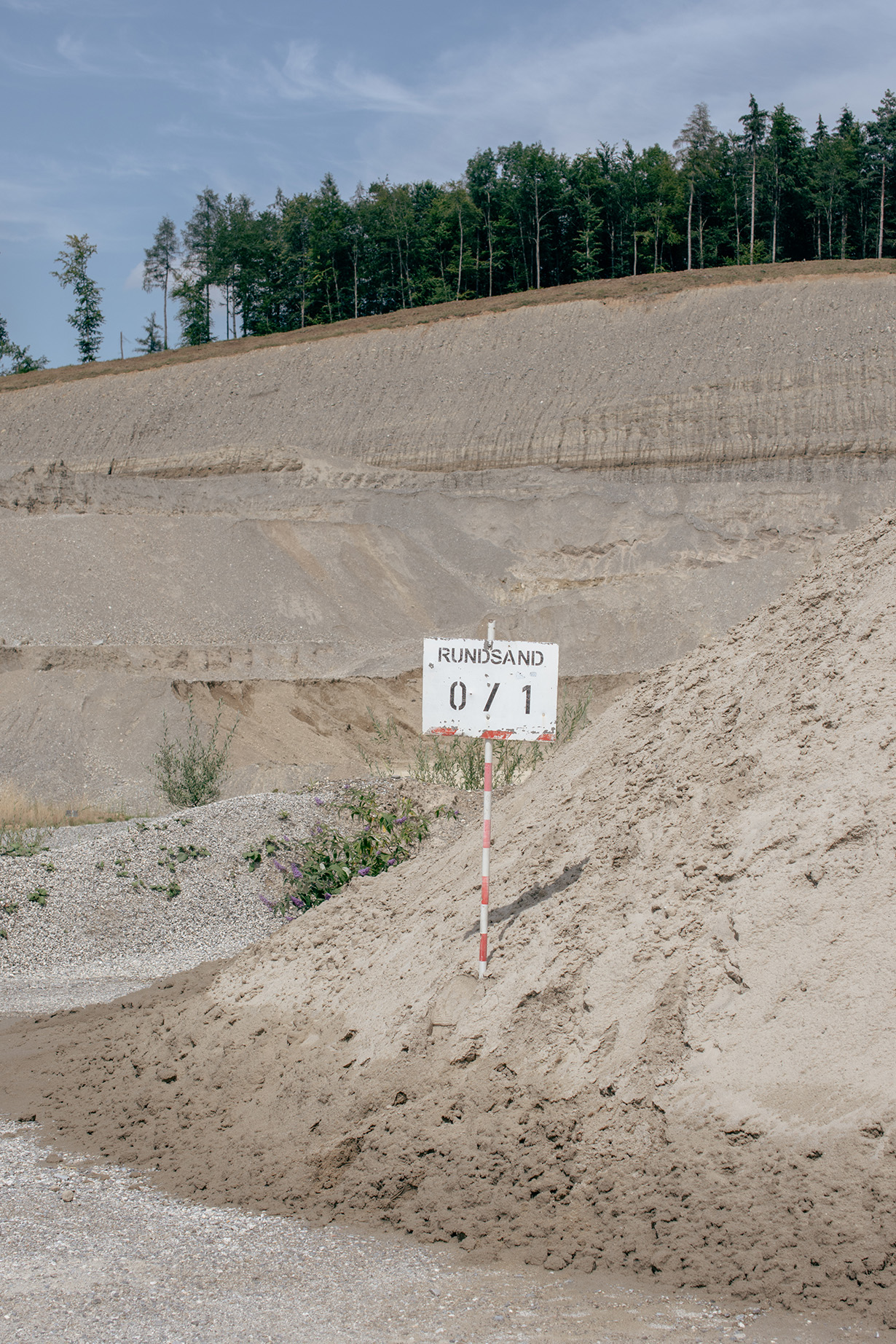 Gravel quarry in Schaffhausen. SE, 2024.
Gravel quarry in Schaffhausen. SE, 2024.
Collecting the waste material. SE, 2024.
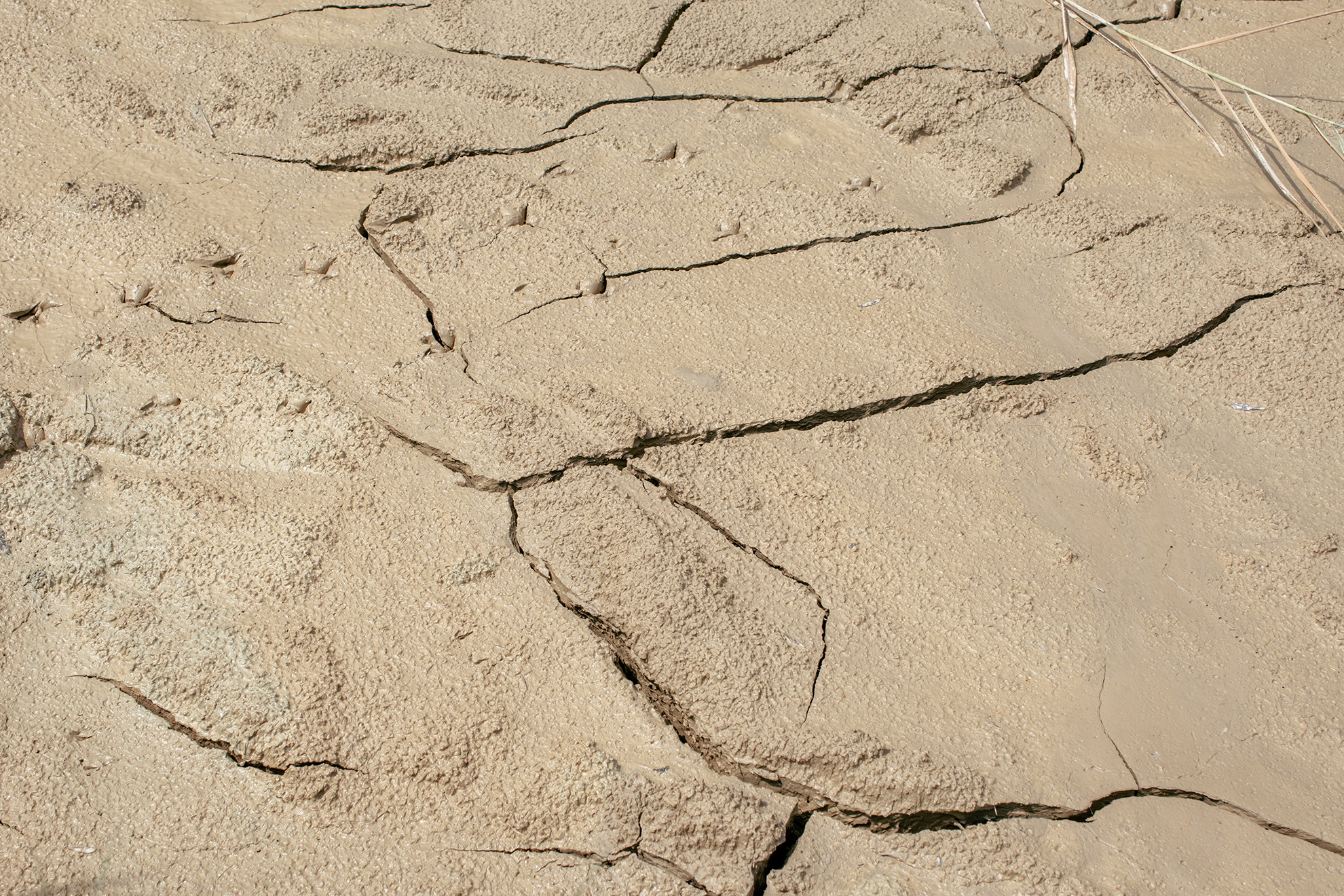

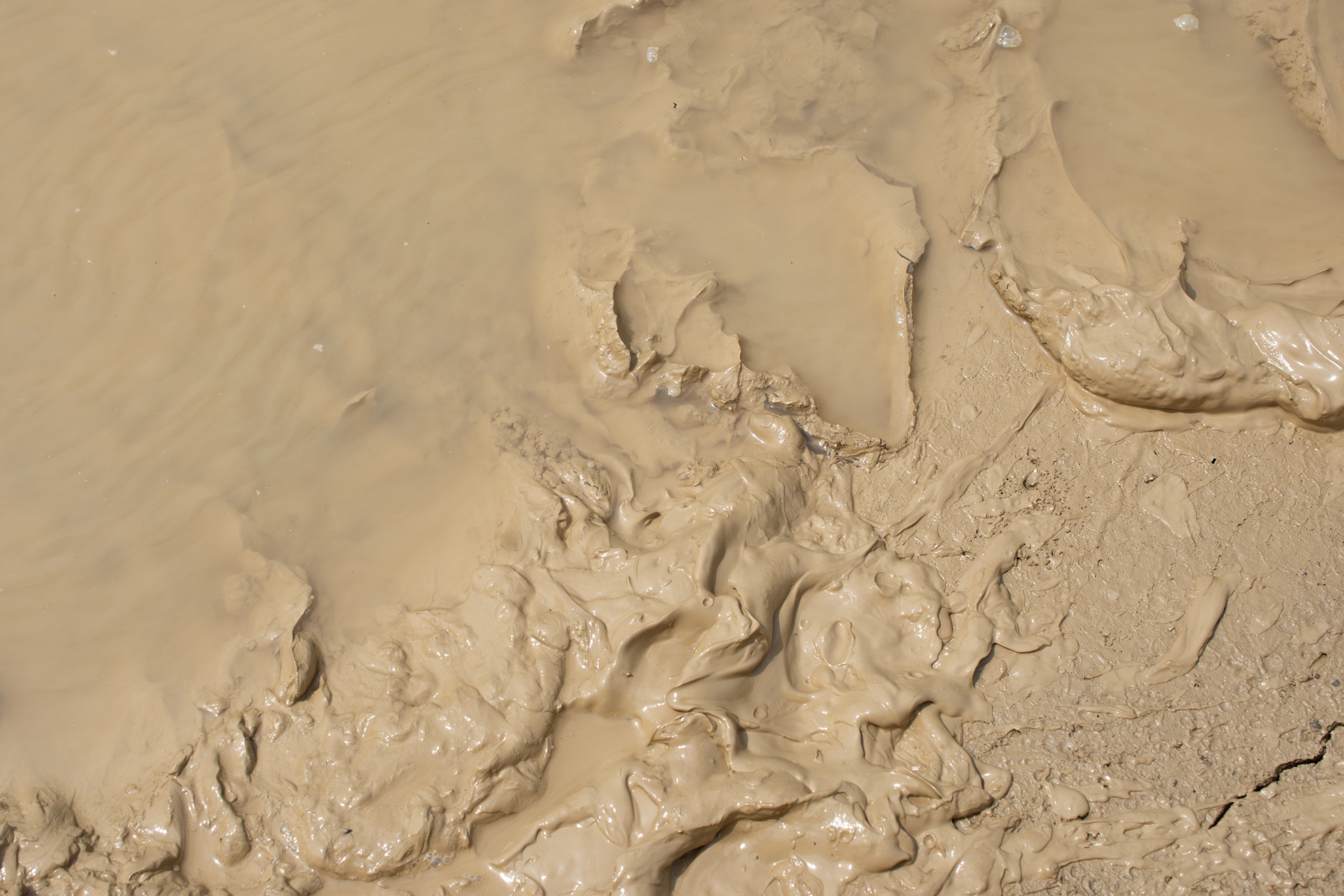
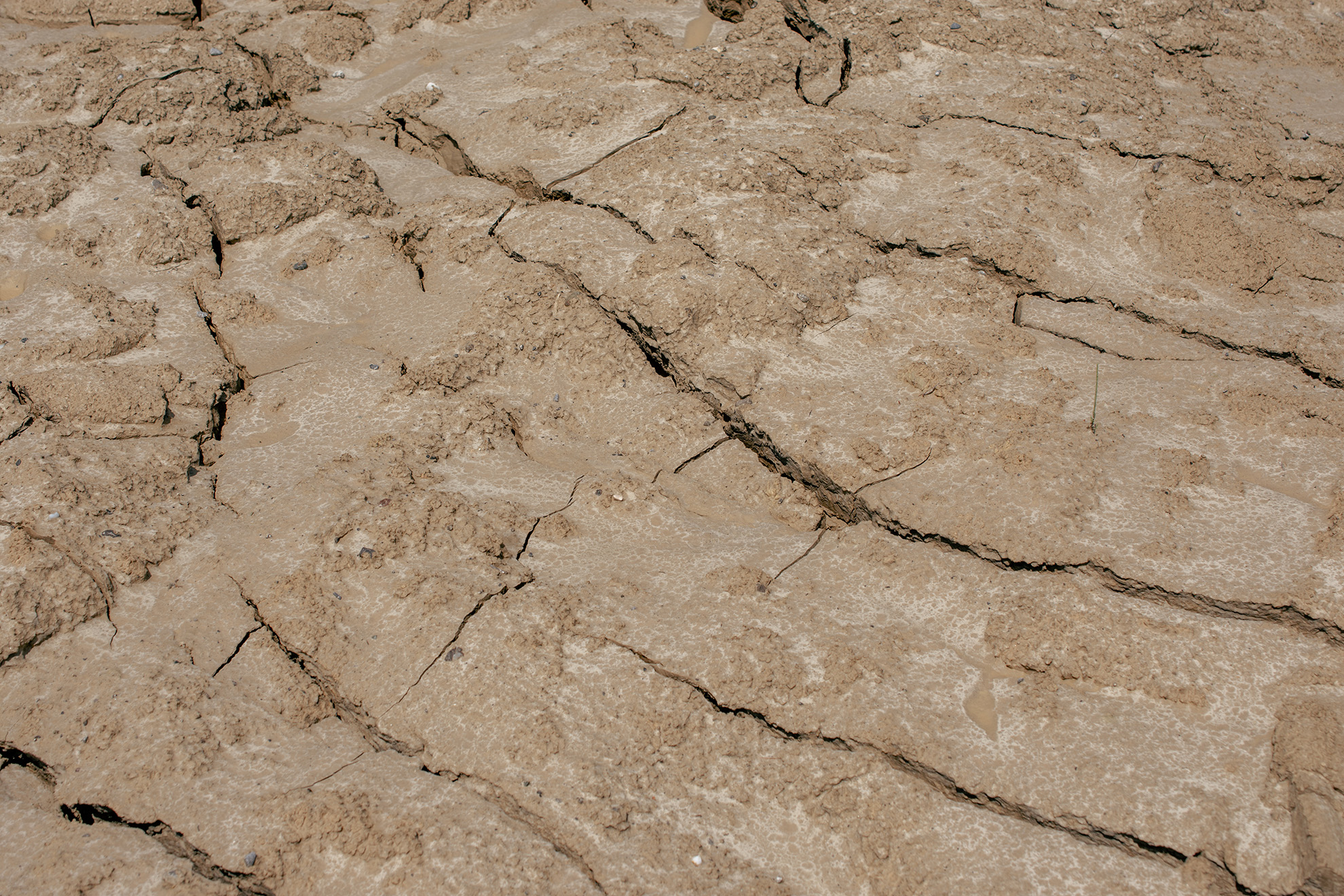
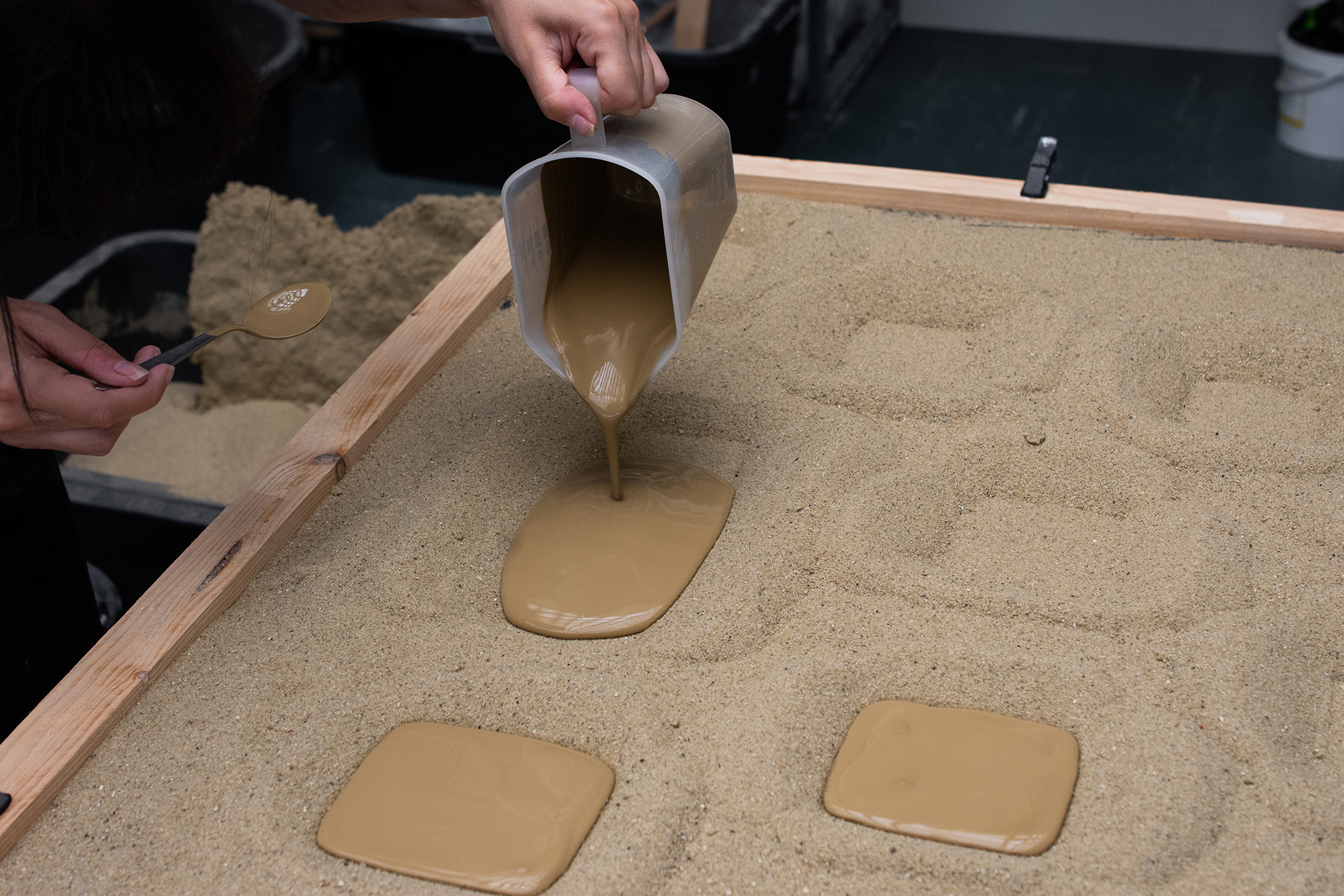
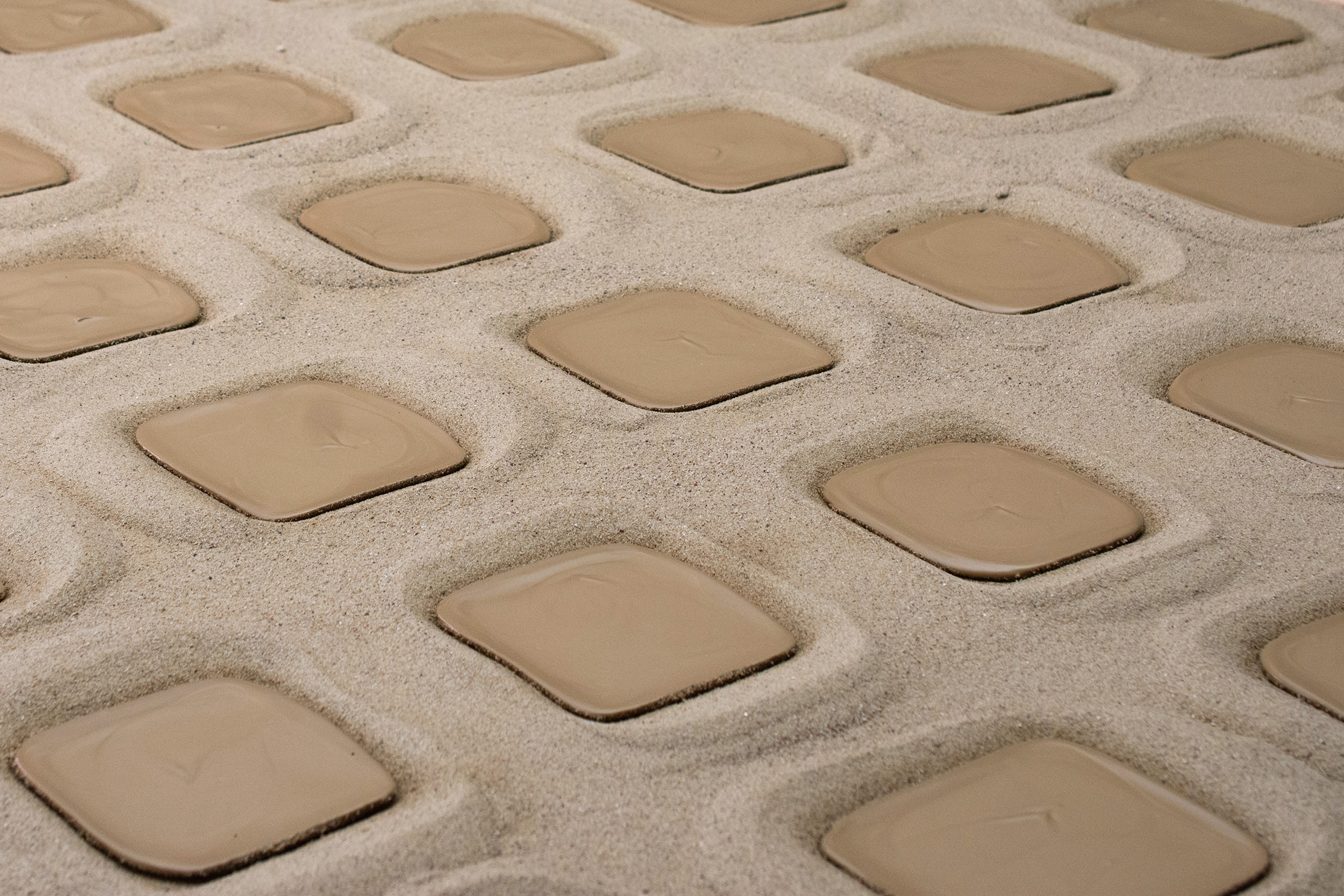
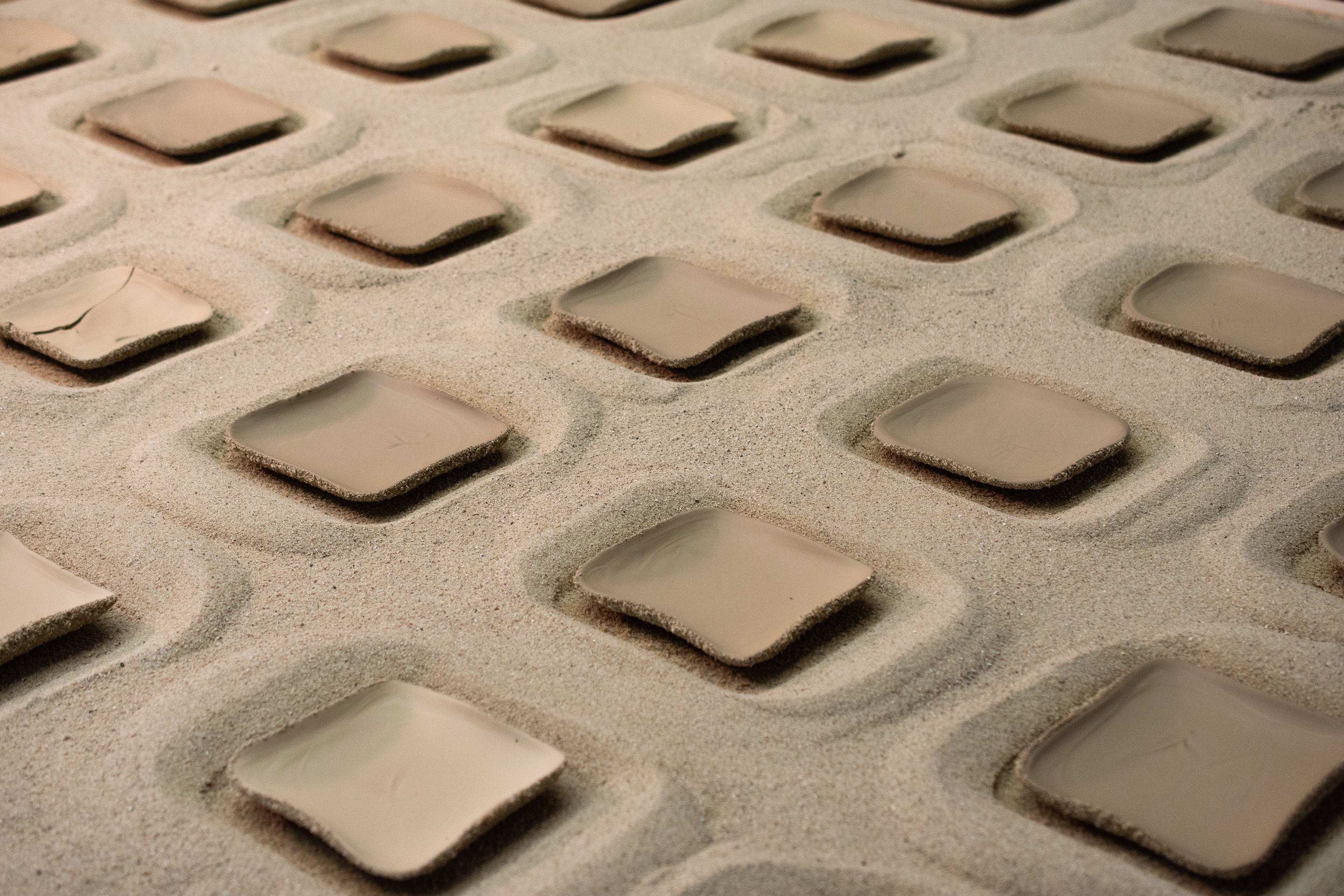

Drying process. SE, 2024.
Since this material represents the discarded portion of the extracted sand, the idea emerged to utilize sand as a casting medium. This approach combines principles of sand casting and slip casting, merging techniques traditionally used in metalwork and ceramics.
In sand casting, the material serves as a temporary mold, capable of capturing details, while in slip casting, its interaction with liquid mixtures highlights its absorptive and structural qualities. The hybridization of these techniques offers a unique space for experimentation, creating forms that are coincidental.
The intriguing process of slow-drying the silt slip revealed an unexpected behavior: the formation of naturally incurved shapes. When cast as flat forms, the material’s drying process created tension at the edges, causing the shapes to curve and warp.
Kiln-fired pieces reveal subtle yet striking variations in form, resulting from the unpredictable effects of the drying process. As the moisture content dissipates unevenly, internal stresses within the material lead to shifts, warping, or subtle distortions that are preserved during firing.
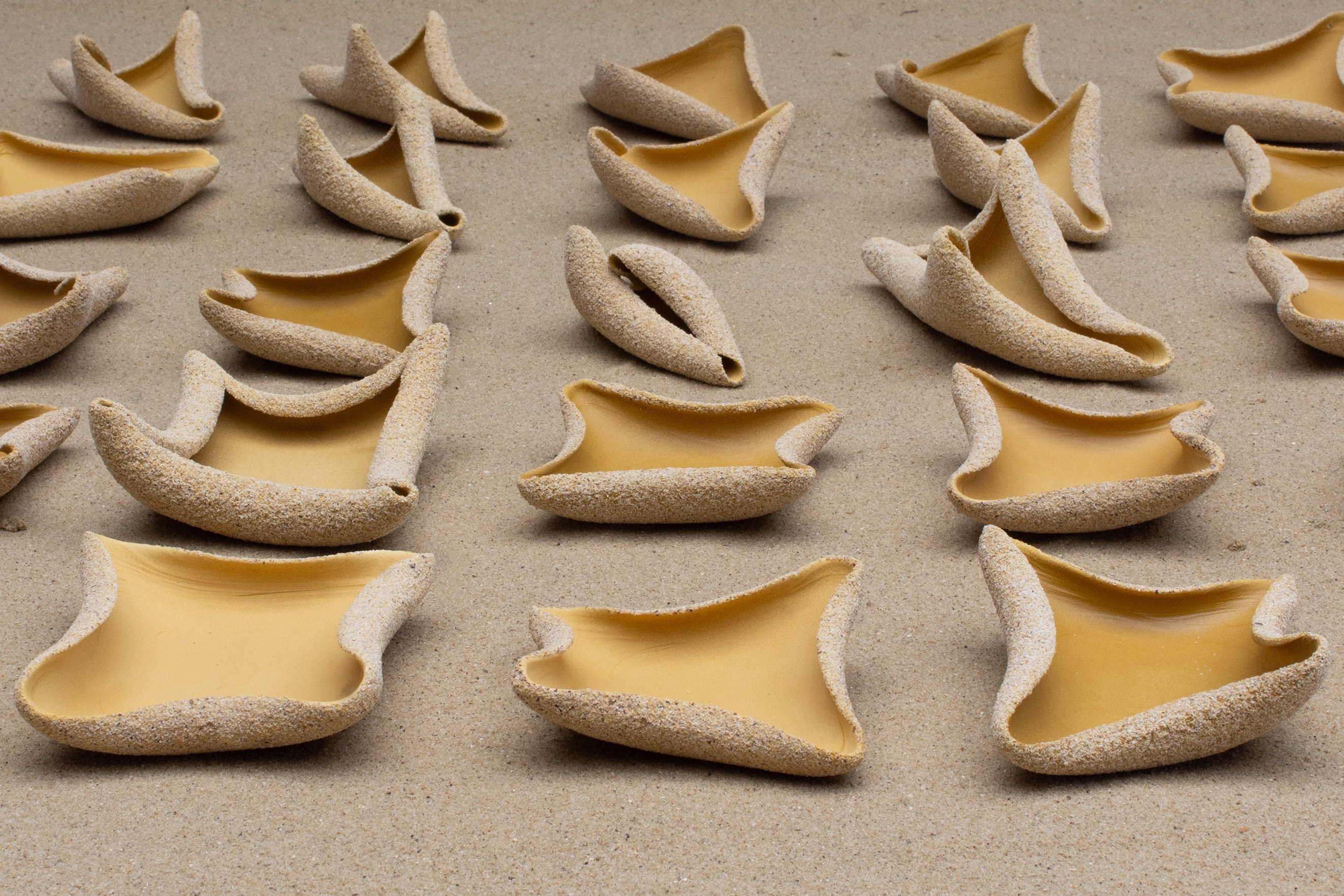
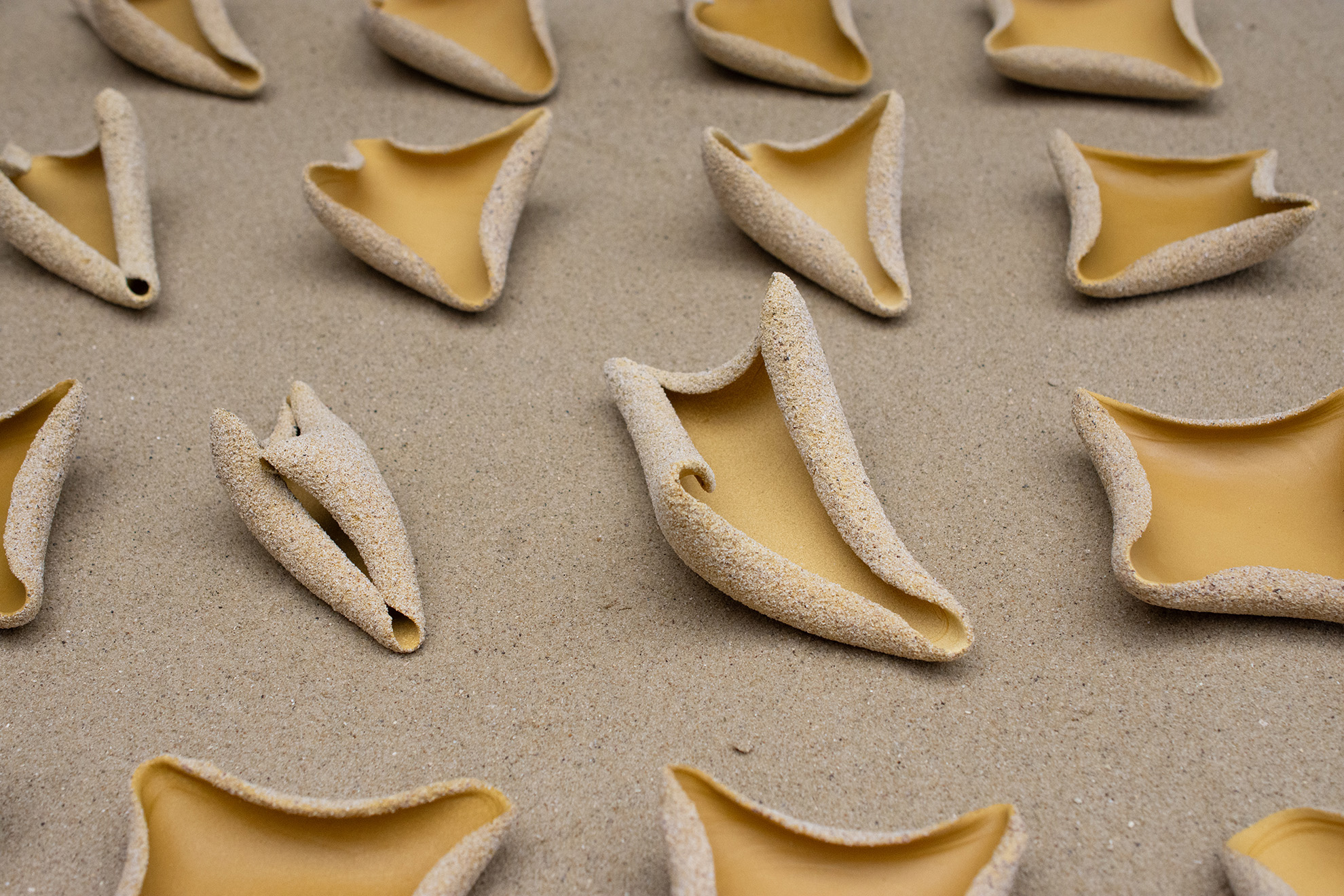
Project info
2024 - Schaffhausen - CH
Gravel washing waste, as known as quarry silt.
Project developed for Steinbeisser event in Goetheanum.
Contact us for more information about the research.